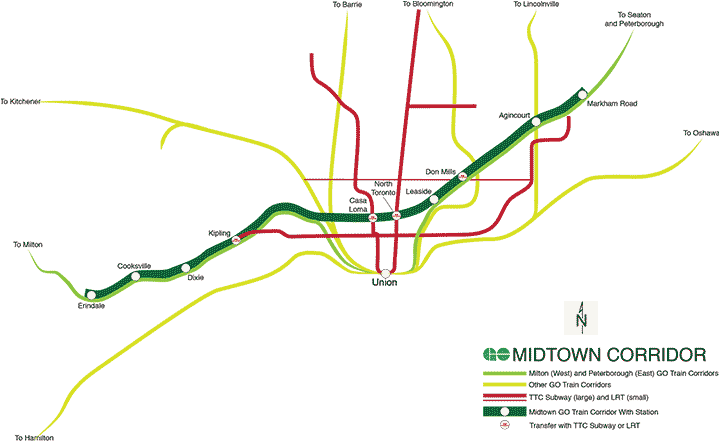Line 2 is one of the most successful subway lines in North America. It's about as long as the L in New York City and has pretty much the same ridership. To call it a failed subway line is absurd, even with the design in mind. Also, we can consider Bloor Street: "Downtown", it services the 504, 505, 506, 510, and 511 streetcars (which thousands of people use each day to get closer to their jobs) and has many people that get off at stops like Sherbourne, Broadview, Bay, Spadina, Bathurst, Christie, Dundas West, etc. Dipping the bloor line south would be incredibly stupid because it would lengthen thousands of people's commutes (the majority of people get off between dundas and Bloor Yonge, so having the subway go south to King, then have to transfer there to go north doesn't make the situation any better, if anything a lot worse because there's PATH. The DRL is not just needed to relieve both the Yonge and Bloor lines, but also to generate its own ridership and density by itself.
Ironically, the Sheppard Subway with 50,000 daily riders is arguably a huge success for almost all North American cities, but yes...the DRL should have been prioritized. However, come to think of it, when the line is eventually extended to Sheppard, there will be a connection point between the DRL and the Yonge line, making both more useful for commuters in the north.
Bloor St is downtown. If you shift the line south, you don't get any connections to the streetcar lines, you lose the core of Bloor that was chocked back then, you cannot interline buses efficiently at subway stations, and ridership would have inevitably been much less. A lot of people work along Line 2 so to say that sending it downtown in its entirety is just stupid. If Technically, we have 3 downtown subways: the Bloor Line between Broadview and Dundas West, The University Subway, and the Yonge Subway. It should also be noted that we have an immense streetcar system that have many Light Rail level sections. I could consider the 510 as higher order transit in many respects, as well as the 504 with the new pilot. If the bloor line was built to dip south to Queen, the same problems would have persisted. And where would they build a subway to downtown in that respect?

